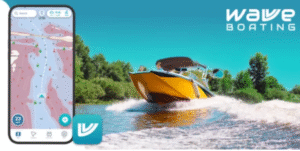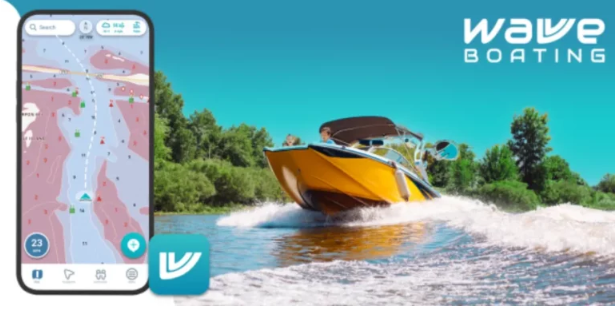C-MAP and Navionics Compare in Accuracy and Detail
In this C-MAP vs Navionics comparison, we’ll break down the key differences between these two charting services, helping you decide which one suits your needs best.

Accuracy and Detail: How Do C-MAP and Navionics Compare?
Both C-MAP and Navionics provide highly detailed marine maps, but there are differences in the accuracy, level of detail, and customization options they offer.
1. Depth Contours and Bathymetry
- Navionics: Known for detailed depth contours and SonarChart Live, which allows boaters to contribute real-time sonar data. This makes Navionics highly accurate in areas with active user contributions.
- C-MAP: Provides high-resolution bathymetry and shaded relief features, making it ideal for fishermen and sailors who require precise underwater terrain mapping.
2. Tidal and Current Data
- Navionics: Offers real-time tide and current information, helping boaters plan their routes efficiently.
- C-MAP: Provides animated tidal flows and current predictions, which can be more visually informative than Navionics’ standard tide tables.
3. User-Generated Data and Updates
- Navionics: Crowdsourced depth data via SonarChart Live, which constantly improves accuracy in frequently navigated areas.
- C-MAP: Offers updates based on professional hydrographic sources, making it more reliable in remote areas where user data is limited.
Coverage and Availability
Both services offer extensive global coverage, but their focus areas differ slightly.
- Navionics: Popular among recreational boaters, anglers, and sailors due to its comprehensive coverage of lakes, coastal areas, and inland waterways.
- C-MAP: More widely used for commercial and offshore navigation, providing detailed oceanic charts along with inland waters.
If you frequently navigate coastal areas or inland lakes, Navionics might be the better option. For long offshore trips or commercial routes, C-MAP provides more reliable deep-sea navigation data.
Usability and Compatibility
1. Device Integration
- Navionics: Works with Garmin chartplotters, mobile apps, and tablets.
- C-MAP: Compatible with Lowrance, Simrad, and B&G devices, commonly used by professional mariners.
2. User Interface and Features
- Navionics: Features an easy-to-use interface with real-time updates and automatic routing.
- C-MAP: Offers more customization options, such as tide animations, high-contrast display settings, and specialized weather overlays.
For those who prefer simple, user-friendly navigation, Navionics might be easier to use. However, if you want more advanced customization options, C-MAP is a strong choice.
Weather and Safety Features
Weather updates and safety alerts play a critical role in marine navigation.
- Navionics: Provides basic weather forecasts and wind predictions, suitable for recreational boaters.
- C-MAP: Offers premium weather data with wind, wave, and, making it better for professional sailors and offshore navigators.
If weather forecasting is a top priority, C-MAP provides more detailed and customizable weather overlays than Navionics.
Pricing and Subscription Models
Both C-MAP and Navionics operate on a subscription model, offering different pricing tiers based on region and features.
- Navionics: Requires a yearly subscription but allows users to download and use maps offline.
- C-MAP: Also offers a subscription-based model, but some versions provide free updates for a longer period.
For budget-conscious users, Navionics might be more cost-effective due to frequent sales and promotions. C-MAP, however, offers longer-lasting updates, making it a better investment for long-term navigation needs.
Which One Is Right for You?
The best choice between C-MAP and Navionics depends on how you use marine charts.
- Choose Navionics if you:
- Need detailed depth contours and real-time updates.
- Want easy-to-use navigation tools for recreational boating and fishing.
- Prefer Garmin device compatibility and a simple user interface.
- Choose C-MAP if you:
- Require high-resolution offshore and deep-sea charts.
- Need advanced weather tracking and tide animations.
- Use Lowrance, Simrad, or B&G devices for navigation.
Final Verdict
Both Navionics and C-MAP offer high-quality marine charts, but their strengths lie in different areas. Navionics is better for recreational boaters and anglers, while C-MAP excels in offshore and commercial navigation.
Before choosing, consider your navigation habits, device compatibility, and budget to ensure you select the best charting solution for your needs.
